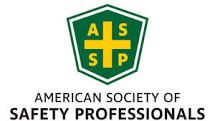What OSHA’s Proposed Changes to Hazard Communication Standard Means for Construction Employers
The Occupational Safety and Health Administration’s (OSHA) proposed amendments to the Hazard Communication Standard (HCS), in 29 CFR 1910.1200, to conform to the United Nations’ Globally Harmonized System of Classification and Labelling of Chemicals (GHS) Revision 7 (GHS, Rev. 7) are substantial and would have broad implications. Specific to the construction industry, construction employers may have new compliance obligations from some materials now being classified as “hazardous” or managed in a different hazard class, resulting in new program, training, and communication obligations.
In its current form, the HCS aims at ensuring effective communication to employees on chemical hazards and employee comprehension of hazards associated with products that they use for work. The proposed amendments, among other things, seek to modify certain hazard classes, conditions for labeling, and language used on safety data sheets (SDS). In addition, OSHA’s amendments propose updates to the HCS classification and labelling framework to be consistent with more recent versions of GHS (the GHS is on Revision 8, but OSHA’s proposal would only align the HCS to with Revision 7 of the GHS and select provisions of Revision 8). OSHA’s proposed HCS amendments have the potential to affect many products used on construction sites, including aerosolized products and products in small containers, as well as alter some chemical product labels and SDSs.
Construction workers often encounter and use materials that are or will be defined as “hazardous” under the HCS. These materials include, but certainly are not limited to, all cleaning products used for sanitation, paint, and concrete. One major amendment proposed is to revise criteria for the classification of certain health and physical hazards, including unstable gases, non-flammable aerosols, skin corrosion, or irritation, eye irritation, and aerosols, generally. The proposed amendments also would create a new hazard class for desensitized explosives.
If the proposed amendments pass, covered employers in the construction industry will need to ensure proper product classification, update their written programs, SDSs, and training materials to comply. Employers also may need to modify their labeling procedures and methods of communicating chemical hazards to workers and other employers on site. Once these changes are complete, employers will have to train affected managers, supervisors, and employees.
Although OSHA intended the amendments to enhance worker health and safety, some stakeholders have opposed the amendments. California’s Division of Industrial Relations Division of Occupational Safety and Health (Cal/OSHA), for example, has expressed a fear the proposed amendments will limit protections for workers. Cal/OSHA submitted comments contending that the amendments will reduce the amount and quality of chemical hazard information available to workers, because it discounts chemical evaluations from the Environmental Protection Agency and other regulatory agencies. The proposed amendments may also conflict with some state adopted hazard communication and regulatory frameworks, which are already in place in California and Washington.
Author: By Cressinda D. Schlag and Kelli Morgan Dreger
You might also like


Book a Service Today
We will get back to you as soon as possible
Please try again later
Safety Starts Here!
We are available weekdays, starting at 8:00 am central.
FIRST, VERIFY Privacy Policy




